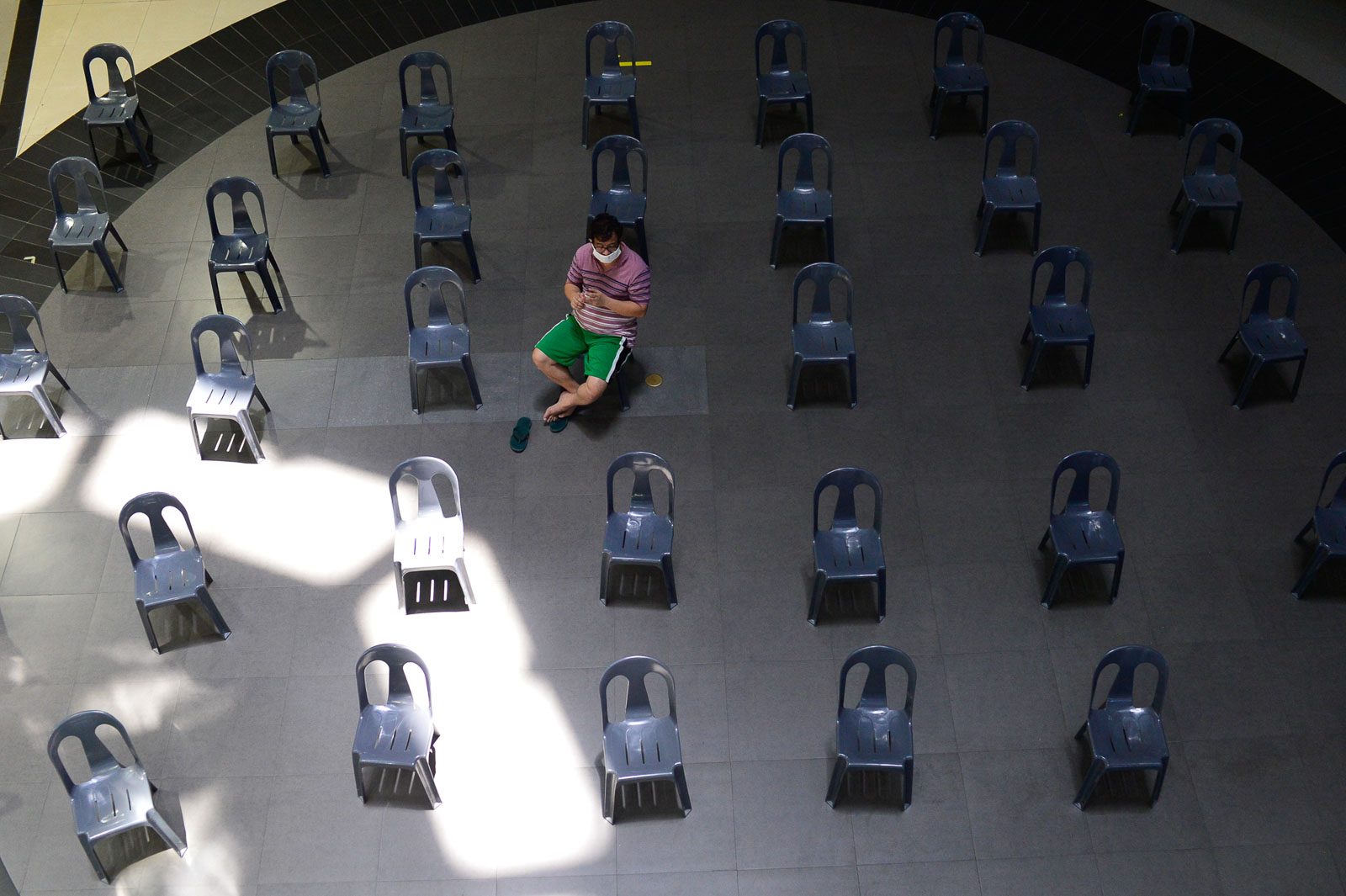SUMMARY
This is AI generated summarization, which may have errors. For context, always refer to the full article.

MANILA, Philippines – Residents of Metro Manila must still be on their guard even under general community quarantine (GCQ) because the region’s coronavirus numbers show it’s far from winning the battle against the disease.
This was emphasized by Guido David, a mathematics professor who belongs to the OCTA Research group of experts behind a study recommending an extension of modified enhanced community quarantine (MECQ) in Metro Manila after May 31.
David was interviewed by Rappler on Friday, May 29, a day after Malacañang announced the new quarantine measures. (Watch the interview here.)
David said he agrees with President Rodrigo Duterte’s decision to downgrade the megacity to GCQ, acknowledging that the government had to consider not just pandemic statistics but also the economy.
Presidential Spokesman Harry Roque admitted the decision to downgrade to GCQ despite the rising cases was because of the economy, which shrunk for the first time in 22 years because of the lockdown.
“This is really a compromise – the need to resume, the reopening of the economy and the need to contain further the spread of COVID-19,” Roque said on Thursday.
With the relaxing of restrictions, citizens now play a greater role in curbing the virus’ spread each time they decide whether or not to step out of their homes.
How is Metro Manila faring? While Metro Manila is just one among 7 areas placed under GCQ, it’s the most worrisome because of its population density and the large number of cases it started with.
How has Metro Manila fared in fighting COVID-19 after weeks under ECQ, then MECQ, over a period of more than two months?
The OCTA Research team found that the region’s 16 cities and lone town had uneven performances and most had failed to sustain any promising trend.
They partly based this conclusion on the reproduction number (R), which is the number of people one positive case can infect. If an area’s R number is below 1, the virus is unable to spread and the area has gained an upperhand in containing the pandemic.
“For example, a few weeks ago, Taguig was doing very well…. Even Pasig City was doing really well, like, if you look at the R, it’s less than 1, so it looks like they flattened the curve. But then they had a surge and the number of cases are increasing also in Taguig and Pasig City,” said David.
Cities that experienced a rise in new cases from May 19 to 25, or when Metro Manila was downgraded to MECQ, were Makati (170% increase), Las Piñas (60%), and Pasay (58%).
Cities that saw a dip in the same period were Mandaluyong, Marikina, Pasig, Quezon City, and San Juan.
David highlighted Quezon City, which saw “two successive weeks of decline” in new cases.
But the net effect is that there was no significant improvement in Metro Manila’s coronavirus numbers. This means there was no dip in new cases to justify relaxing quarantine measures but neither was there a sudden surge.
“The net effect is generally that the number of cases have been more or less steady. I think they decreased just a little bit but the decrease was not enough for us to recommend moving in to GCQ based on the numbers alone,” said David.
The numbers could also mean that the relaxing from ECQ to MECQ did not bring about a surge in infections.
“The picture that we’re seeing now is that it was about the same. When we relaxed to MECQ, there was not a huge change. Maybe some stores opened up, but restaurants were still closed. We didn’t have public transportation,” said David.
All workers are now frontliners. But the picture might not be as good for relaxing to GCQ because, under this form of quarantine, public transportation will operate for the first time in more than two months.
It will mostly be workers taking public transportation because of the continued ban on non-essential travel. Thus, all workers must be treated as frontliners.
“When we go into GCQ, everybody becomes a frontliner. We also have to practice discipline and be self-aware. If you feel like you have symptoms, don’t spread it, don’t go out,” stressed David.
The real danger is the highly likely non-reporting of asymptomatic cases. Some 90% of coronavirus-positive individuals are either mild or asymptomatic.
Asymptomatics could unknowingly spread the disease to vulnerable persons who could die from the virus.
When can Metro Manila and other high-risk areas pat themselves in the back for curbing the virus’ spread? When a decline in new cases is sustained for at least two weeks.
“To be on the conservative side, we want to see a continued decrease. Let’s say we extend for another two weeks but we see a continued trend in decreasing new cases, then we can relax the GCQ,” said David. – Rappler.com
Add a comment
How does this make you feel?
There are no comments yet. Add your comment to start the conversation.